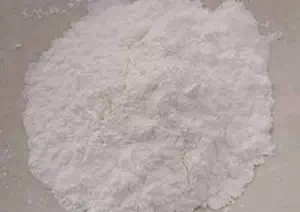All Categories


Kinetin CAS 525-79-1 6-Furfurylaminopurine, Kinetin, CAS 525-79-1, 6-Furfurylaminopurine
Agonist (CAS 525-79-1), as the first synthesized cytokinin, is irreplaceable in plant tissue culture, fruit and vegetable preservation, and crop yield increase. However, due to its higher cost than 6-BA and lower biological activity, its agricultural applications are limited. Currently, it is mainly used in scientific research and high-end tissue culture.
CAS : 525-79-1
Formula : C10H9N5O
Mol. wt. : 215.21
EINECS : 208-382-2
| CAS | 525-79-1 |
| Molecular formula | C10H9N5O |
| Molecular weight | 215.21 |
| EIENCS | 208-382-2 |
| Form | crystalline |
| Melting point | 269-271 °C (dec.)(lit.) |
| boling point | 355.49°C (rough estimate) |
| Density | 1.2639 (rough estimate) |
| Solubility | H2O: soluble |
| PKA | / |
| Color | / |
| Storage temp | Minus 70°C |
Agonist (CAS 525-79-1), as the first synthesized cytokinin, is irreplaceable in plant tissue culture, fruit and vegetable preservation, and crop yield increase. However, due to its higher cost than 6-BA and lower biological activity, its agricultural applications are limited. Currently, it is mainly used in scientific research and high-end tissue culture.
Usage suggestions:
Preservation application: Spray 20 mg/L of leafy vegetables before harvest, combined with 0.1% citric acid for enhanced efficacy.
Tissue culture: It is compounded with auxin (NAA/IAA) at a ratio of 1:100 to induce bud differentiation.
Avoid high temperatures (decomposition above 220℃) and strong light exposure. For industrial-grade products, residual solvents need to be tested.
Core physiological function
Promote cell division and differentiation: Induce callus to sprout and eliminate apical dominance.
Anti-aging: Inhibit the degradation of chlorophyll/protein and extend the freshness period of fruits and vegetables (for example, spray 20 mg/L on celery and spinach).
Regulate growth: Break seed dormancy and increase fruit setting rate (spray 300-400 mg/L before apple flowering).
Toxicity grade: Low toxicity (LD50 oral administration in rats > 5000 mg/kg;) Mice were intraperitoneally injected with 450 mg/kg.
Health risk:
It causes slight irritation to the skin and eyes (GHS identification: Xi, risk code R36/37/38).
There are no reports of carcinogenicity, but direct contact should be avoided.
Storage requirements: Keep in a sealed, light-proof container at -20℃ (valid for 3 years).
* Prompt reply and 24 hours online, professional team to provide best price and high quality product.
* Sample testing support.
* Every batch of products will be tested to ensureits quality.
*The packing also can be according the customers` requirment.
*Any inquiries will be replied within 24 hours.
*we provide Commerical Invoice, Packing List, Bill of loading, COA , Health certificate and Origin certificate. If your markets have any special requirements, let us know.